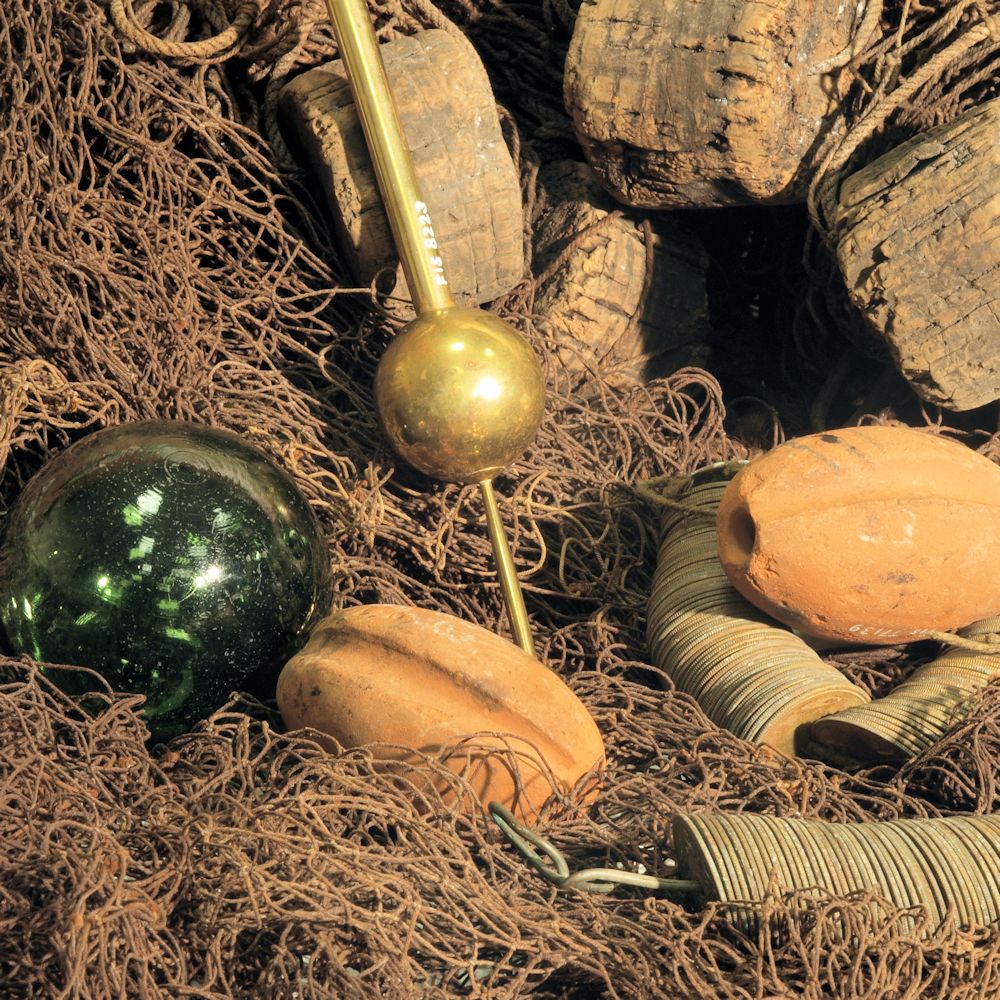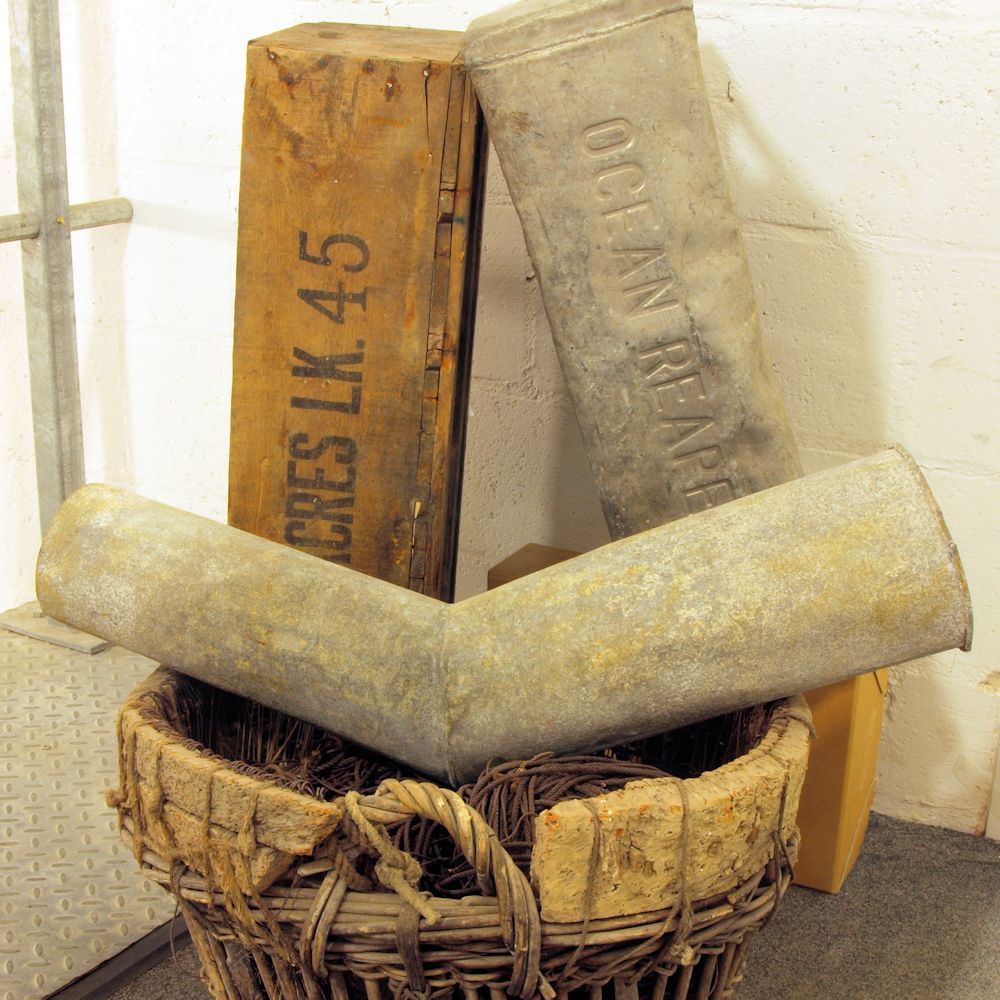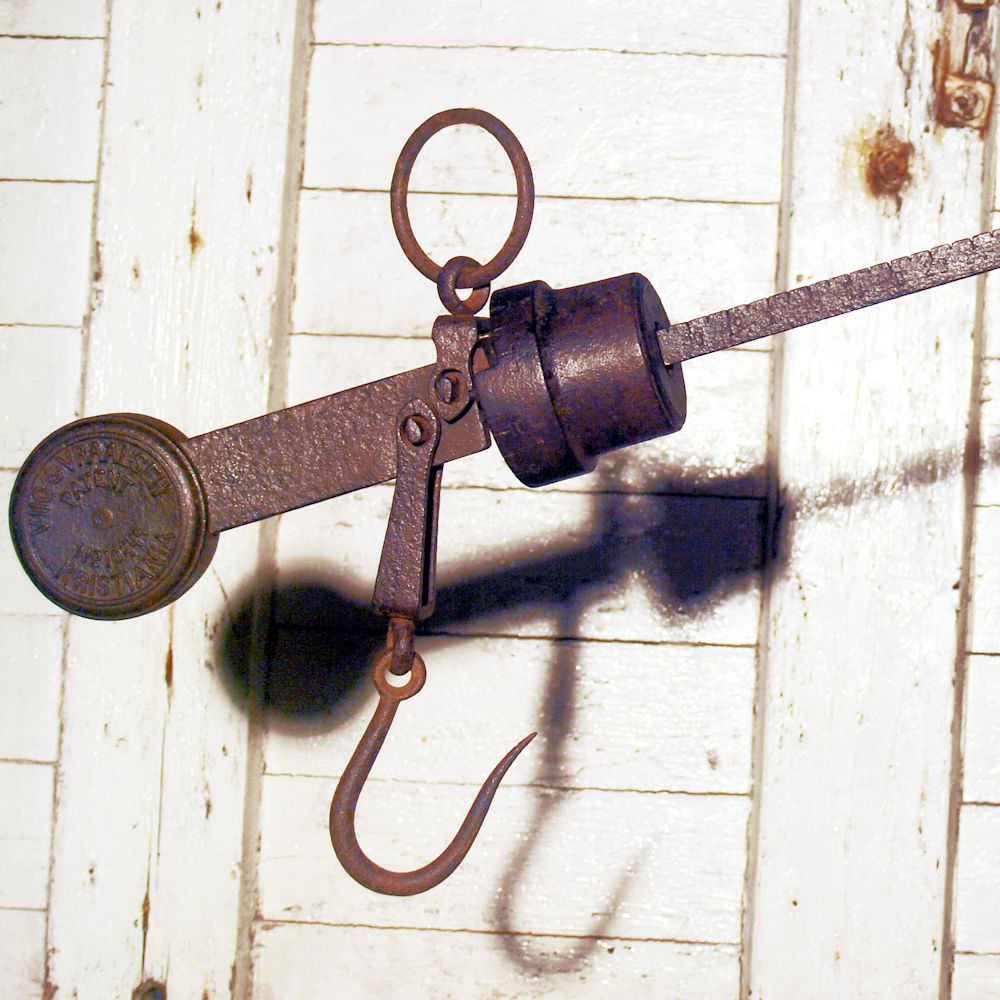Fisheries
Our fisheries collection tracks the ever-changing industry, from sail to motor, from lines to nets, and from quadrant to radar. Shetlanders abandoned indigenous technologies in the 19th century and adopted new fishing and navigation methods, and new types of boats.
Traditionally, whitefish was dominant. We hold many objects from the exciting era of deep-sea cod fishing which include boats’ fixtures, navigational instruments and fish processing tools. No less important to Shetlanders at this time were smuggled kegs of “Faroe brandy”.
Islanders caught haddocks in the home white fishery of 1850-1950. The Museum holds examples of all the equipment – lines, buoys, sinkers, lanterns and line-haulers. This became defunct when the industry moved to motor boats and catching by net from the 1940s. We have objects that were instrumental in making this a success, such as telecommunications equipment, and models of different vessels.
The pelagic sector has seen prosperity. It started with the Dutch fleet, and we have reminders of these welcome visitors, like boat paintings and souvenirs of Lerwick. We hold many objects from Shetlanders’ own herring fishery, not just gear for catching, but also processing and barrel-making.
Local commercial whaling was important in the 20th century, and we have various items from the stations operating around 1900-1920. Later, islanders followed the industry to the South Atlantic, and our collection holds pieces of apparatus and whalers’ crafts. The larger items include a harpoon gun, down to the smallest such as painted penguins’ eggs.
 View Full Size
View Full Size View Full Size
View Full Size View Full Size
View Full Size